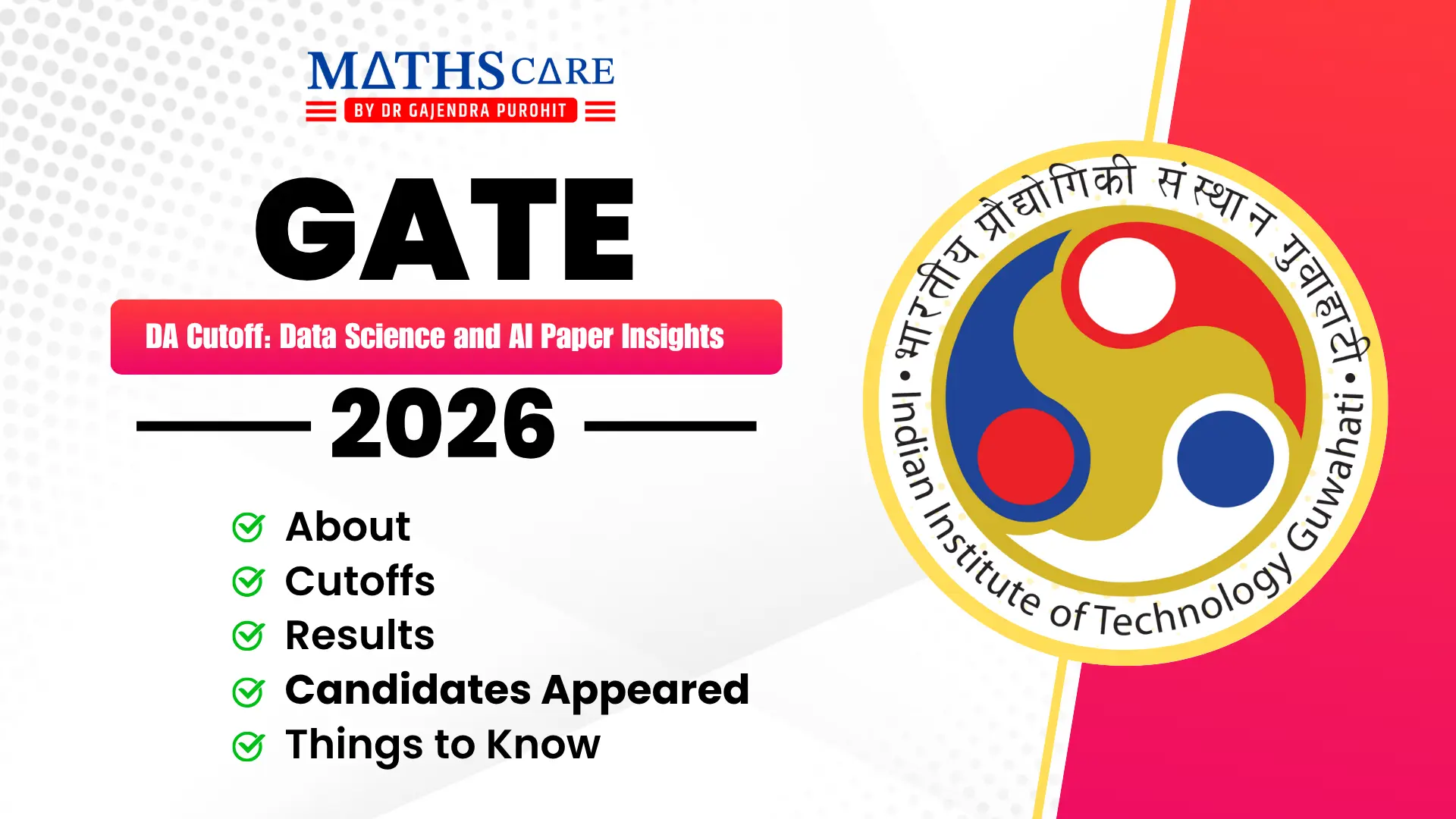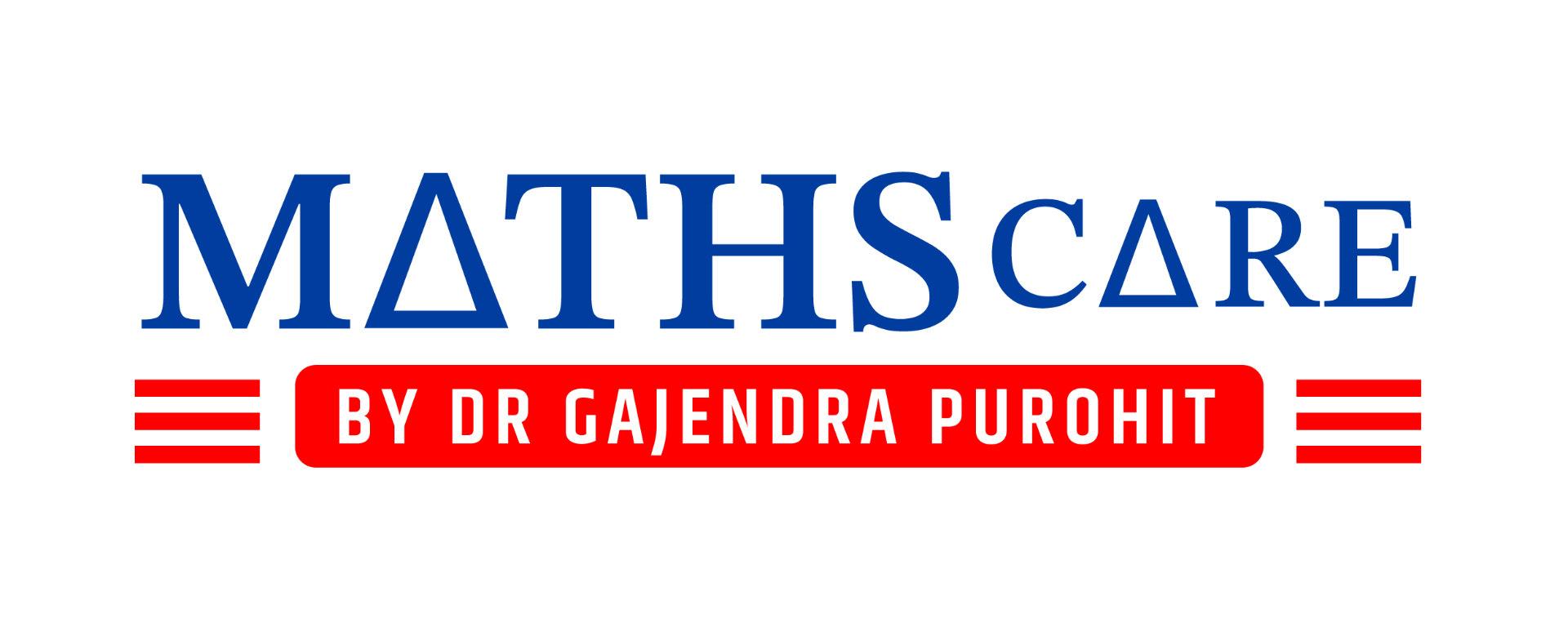GATE DA Syllabus 2025 PDF: Download Streamwise Topics
GATE (Graduate Aptitude Test in Engineering): The GATE 2025 paper in Data Science and Artificial Intelligence (DA) is one of the most promising and in-demand options for students and professionals looking to step into the world of AI, machine learning, and big data. As industries increasingly depend on data to drive innovation and efficiency, the demand for experts who understand both computational and statistical methods has grown exponentially. Recognizing this trend, the GATE committee introduced the DA paper, which continues to attract a record number of candidates. To succeed in GATE DA, understanding the official syllabus thoroughly is your first and most critical step. This blog provides a complete streamwise breakdown of the syllabus, tips to tackle each section, and a link to download the official GATE DA 2025 syllabus PDF.
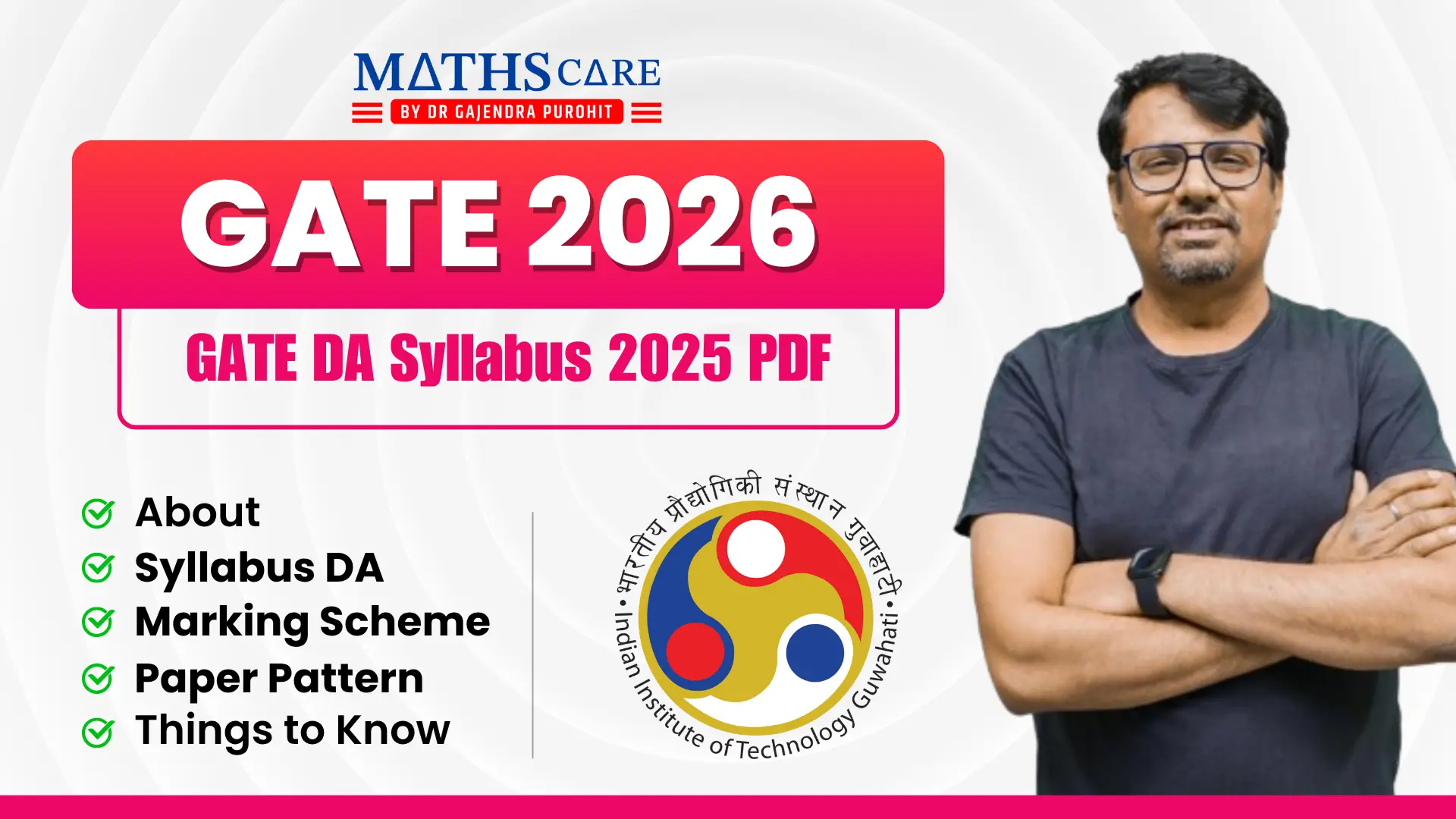
What is GATE 2026 DA?
The GATE DA (Data Science and Artificial Intelligence) paper is designed to assess a candidate’s proficiency across a range of skills required in data science domains, including probability, statistics, linear algebra, machine learning, and AI logic. The paper is interdisciplinary in nature and is suitable for candidates from computer science, statistics, mathematics, electronics, and related fields.
As of GATE 2025, the paper is conducted in Computer-Based Test (CBT) mode and includes 65 questions to be solved in 3 hours for a total of 100 marks. The examination is objective in nature and includes multiple types of questions:
Multiple Choice Questions (MCQs)
Multiple Select Questions (MSQs)
Numerical Answer Type (NATs)
The question paper is divided into two parts: General Aptitude (15 marks) and Subject-Specific (85 marks).
Streamwise Syllabus Breakdown
The official syllabus of GATE DA 2025 is structured into six main areas. Each stream focuses on a specific set of topics drawn from real-world applications and academic foundations.
1. Probability and Statistics
This section forms the core of data modeling and decision-making under uncertainty. Topics include:
Random variables and probability distributions
Conditional probability, Bayes’ Theorem
Moments, expectation, variance
Sampling theory and Central Limit Theorem
Confidence intervals and standard statistical tests (z-test, t-test, chi-square test)
Correlation, covariance, and hypothesis testing methods
Mastering these topics is vital for understanding both traditional statistical techniques and more advanced probabilistic models in machine learning.
2. Linear Algebra
Linear algebra is essential for modeling high-dimensional data and understanding machine learning algorithms like PCA, regression, and SVM. Key topics include:
Vector spaces, matrices, and matrix operations
Rank, nullity, and linear independence
Determinants, eigenvalues, eigenvectors
Matrix factorizations such as LU and SVD
Orthogonality and projection matrices
Expect multiple-choice and numerical-type questions based on matrix computations and their geometric interpretations.
3. Calculus and Optimization
Optimization is at the heart of training machine learning models. Combined with calculus, it allows understanding how algorithms converge. The syllabus includes:
Functions, limits, and continuity
Differentiation and Taylor series
Maxima, minima, and saddle points
Convexity, gradient descent basics, and one-variable optimization techniques
This section builds the mathematical intuition required to grasp how learning algorithms are tuned.
4. Programming, Data Structures, and Algorithms
This stream tests the candidate’s computational ability and problem-solving skills using algorithms and basic data structures:
Python programming: loops, recursion, functions
Data structures: arrays, linked lists, stacks, queues, trees, graphs
Sorting and searching algorithms: merge sort, quick sort, binary search
Graph algorithms: BFS, DFS, shortest paths (Dijkstra, Floyd-Warshall)
Candidates must be able to analyze code for time and space complexity, and write or debug small Python functions.
5. Database Systems and Data Warehousing
Data is the backbone of any AI pipeline. This stream ensures candidates can store, query, and preprocess large datasets effectively:
ER models and relational database schema
SQL operations: joins, subqueries, group-by
Relational algebra and tuple calculus
Normalization and indexing
Data warehouse modeling, dimensional schemas (star/snowflake), OLAP
Data transformation workflows and ETL (Extract, Transform, Load)
Basic familiarity with file systems, schema design, and querying is expected.
6. Machine Learning and Artificial Intelligence
This section covers the core of predictive modeling and intelligent decision-making:
Supervised Learning: linear regression, logistic regression, SVM, k-NN, decision trees, naive Bayes
Unsupervised Learning: k-means, hierarchical clustering, PCA, k-medoids
Neural Networks: perceptrons, backpropagation, activation functions
AI Reasoning: logic (propositional and predicate), adversarial and informed search, probabilistic inference (Bayesian networks, sampling)
This area requires both conceptual clarity and practical insight. Most questions are scenario-based and test a mix of theory and application.
General Aptitude Section
The General Aptitude (GA) section is common across all GATE papers and is designed to evaluate:
Numerical Ability: Averages, percentages, time & work, profit/loss, number systems
Verbal Ability: Reading comprehension, grammar, word usage, sentence structure, critical reasoning
Though worth only 15 marks, this section is often a rank-booster, especially when competition is tight. Regular practice and vocabulary building are recommended.
Marking Scheme and Question Format
1-mark questions: -1/3 negative marking (only for MCQs)
2-mark questions: -2/3 negative marking (only for MCQs)
MSQs and NATs: No negative marking
Distribution:
15 marks for General Aptitude
85 marks for DA Subject Questions
Candidates must attempt all questions within 3 hours. There is no sectional time limit, allowing you to choose your own order.
GATE DA Syllabus 2025 PDF Download Link
To aid your preparation, download the official syllabus directly from IIT Roorkee’s GATE portal. This document provides the complete topic list, ensuring you don’t miss anything during your preparation:
Keep this PDF printed or bookmarked for regular reference. Use it to create a personalized study tracker or progress chart.
Strategy for GATE 2026 Aspirants
Candidates targeting GATE 2026 should treat the 2025 cutoffs as minimum benchmarks and structure their study accordingly. A well-rounded strategy would include:
Starting early with core subjects: linear algebra, probability, statistics, and supervised learning
Learning Python from scratch and applying it to build ML models and solve basic DSA problems
Attempting at least 10 full-length mocks, ideally in the final three months
Using tools like Anki or Notion to create revision flashcards for key formulas and code patterns
Focusing equally on General Aptitude, which often tips the scale for borderline scores
Aim for a score in the 60–70+ range if your target is a top IIT or global research opportunity. Remember that preparation consistency and mock test performance are strong indicators of eventual success.
Conclusion
The GATE 2025 DA syllabus covers a wide range of topics essential for mastering the fields of data science and artificial intelligence. With increasing participation and rising cutoffs, the exam is now one of the most competitive yet rewarding in the GATE portfolio. A strong grip on the syllabus—stream by stream—gives you a significant edge in planning and executing a top-rank preparation strategy. Download the PDF, map your strengths, and start early—GATE DA success is a blend of conceptual depth, practice, and persistence.
GATE FAQS
Admit cards will be available for download in January 2025.
GATE scores are valid for three years from the date of result announcement.
Yes, but only during the correction window, and you may need to provide supporting documents.
Upload the side of your ID showing your photo, name, date of birth, and ID number.
Yes, but you must upload an affidavit with your photo ID.
BEST OFFERING COURSES FOR YOU
BEST BOOKS FOR IIT JAM/ CSIR-NET
BUY BOOKS ON OUR APP
RECENT POSTS
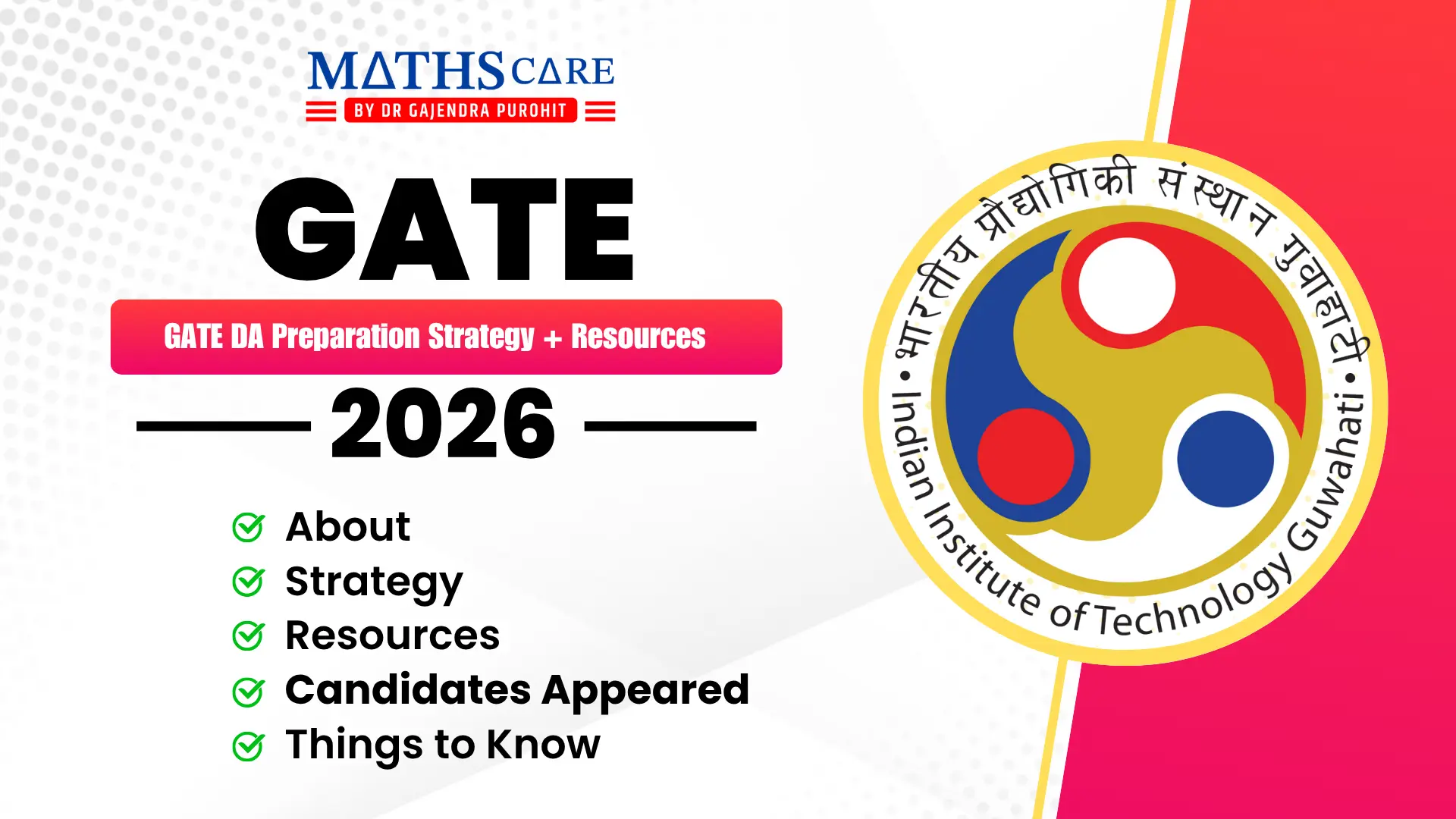
GATE DA Preparation Strategy + Resources
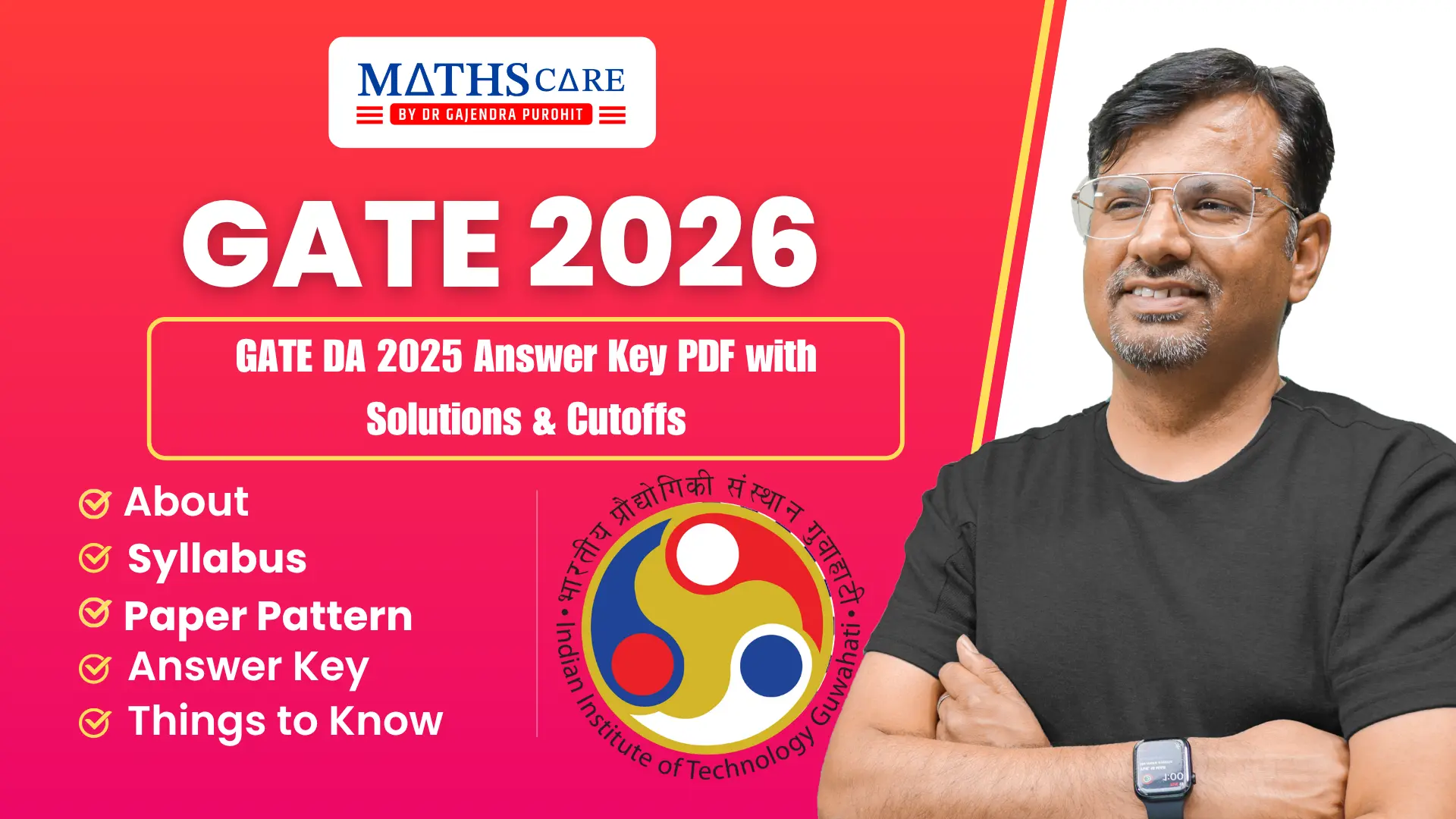
GATE DA 2025 Answer Key PDF with Solutions & Cutoffs
